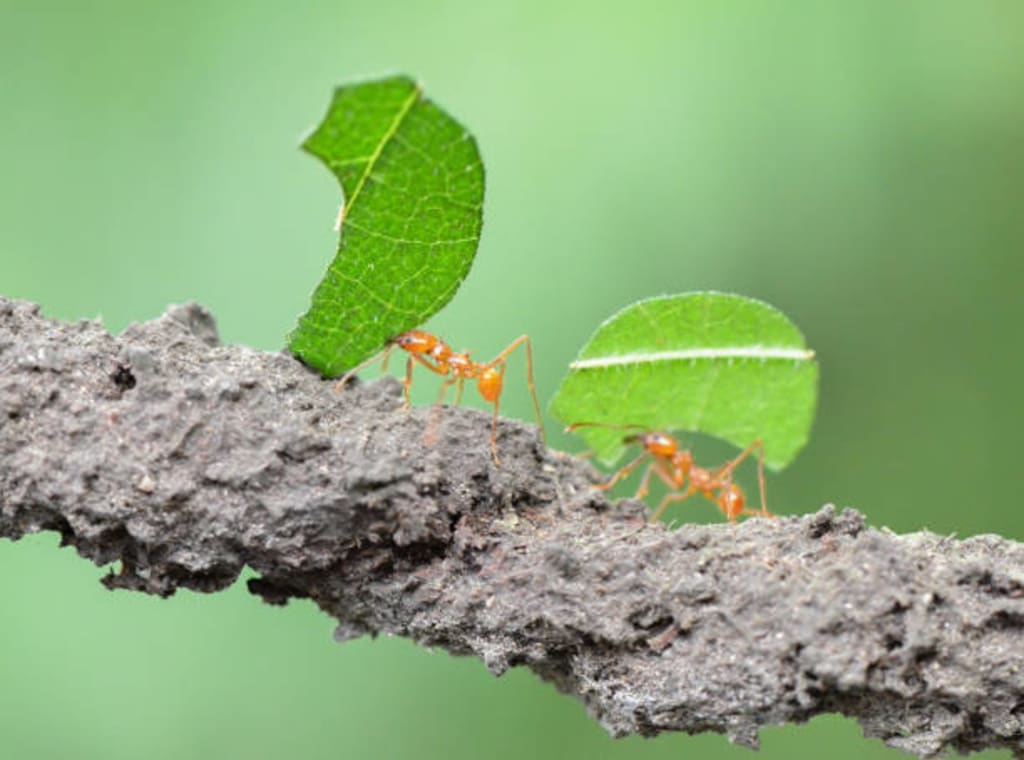"Ants' Remarkable Devil's Gardens: A Fascinating Feat in the Rainforest"
"Exploring the Mysterious World of Ants: Fascinating Behavior and Their Role in Ecosystems"

Archeologists have made a remarkable discovery within these enclosures, revealing minimal signs of human habitation. This suggests that these enclosures likely served as venues for ceremonial gatherings rather than as residential settlements. While the exact purpose of these structures remains elusive, their importance within the Amazon ecosystem is evident.
To gain a deeper understanding of the extent of human settlements in the Amazon, scientists turned their attention to the Upper Tapios River Basin, a major tributary of the Amazon. Using satellite imagery, they identified 81 previously unknown archaeological sites in this basin, encompassing a total of 104 earthworks. This indicates the presence of a continuous network of earthworks spanning the southern rim of Amazonia.
Subsequent ground surveys of 24 of these sites unveiled evidence of past human occupation, dating from 1250 to 1500 CE, with dimensions ranging from approximately 100 to 1300 feet in width. The larger structures were typically hexagonal fortified settlements, suggesting a level of planning and consistency in their construction.
Based on the size and distribution of these earthworks, researchers proposed that similar settlements could have extended across an area of roughly 154,000 square miles in the southern Amazon, potentially supporting a population ranging from 500,000 to 1 million people during the late pre-Columbian era.
It's crucial to note that this recent study doesn't imply that the Amazon rainforest was ever a bustling metropolis; much of the region remains uncharted, and the distribution of pre-Columbian populations across Amazonia remains uncertain. Nonetheless, it's exciting to unearth insights into these ancient societies and the intriguing remnants they've left behind. Scientists intend to conduct further excavations in the Upper Tapios Basin to refine their understanding of the cultural developments in this area.
In addition to these archaeological enigmas, the Amazon rainforest harbors a distinctive creature: the Amazon pink river dolphins. These enigmatic beings remain cloaked in mystery, with much yet to be discovered about them. They possess unique features, including a small, pale body, a pink nose, and pink lips, while sharing typical dolphin characteristics such as plump bodies, bulbous foreheads, slender snouts, chubby cheeks, and small eyes. Found in countries like Bolivia, Brazil, Colombia, and Peru, they represent the sole species of river dolphins in the Amazon River. Regrettably, these pink river dolphins are critically endangered, posing challenges to their study due to their dwindling population.
As we delve into the concealed mysteries of the Amazon, we encounter narratives of adventurers like Percy Fawcett, a name synonymous with Amazon exploration. Percy dedicated his life to uncovering the secrets of the Amazon rainforest, particularly a legendary lost city referred to as "Z." Born in England in 1867, Percy embarked on seven expeditions to the Amazon between 1906 and 1924, gradually edging closer to unraveling the enigma of "Z." The sheer vastness of the Amazon rainforest is staggering; it's so immense that it could house the entire UK and Ireland 17 times over, underscoring the immense scale of the region. Despite Percy's unwavering efforts, he never located the lost city of "Z" and vanished during his final expedition in 1925. His saga continues to inspire countless archaeologists and explorers, and it was even adapted into a book and a movie titled "The Lost City of Z."
Furthermore, the Amazon rainforest is home to approximately one million indigenous people living unique lives. These communities engage in hunting, fishing, farming, and have access to Western medicine and education. However, not all of these indigenous groups are eager to interact with outsiders, which is understandable given the historical mistreatment they've endured from loggers, miners, and ranchers. Some tribes have chosen isolation to protect themselves from potential external threats. In 2018, Brazilian authorities managed to capture a photograph of an isolated man known as the "indigenous man in the hole." He is the last surviving member of his tribe and has expressed a preference for solitude, declining visitors from the outside world. Nevertheless, authorities provide him with seeds and tools to support his self-sustaining lifestyle. This underscores the intricate and diverse human presence within the Amazon rainforest, with various indigenous communities coexisting alongside its unique flora and fauna.
About the Creator
StoryScriber
"Welcome to my page! I'm passionate about sharing intriguing stories and inspiring content. Join me in exploring the world of knowledge!"
Enjoyed the story? Support the Creator.
Subscribe for free to receive all their stories in your feed. You could also pledge your support or give them a one-off tip, letting them know you appreciate their work.






Comments
There are no comments for this story
Be the first to respond and start the conversation.